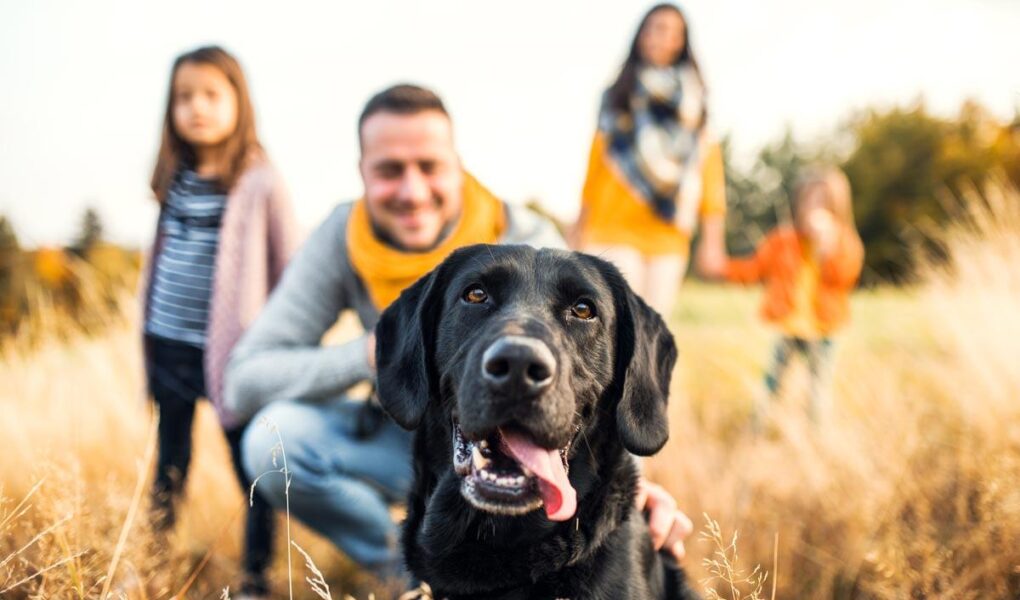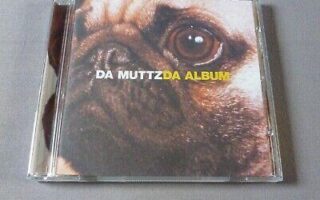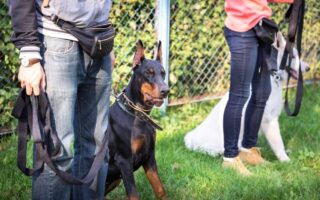Introduction: The Harmonious Bond of Family Dog Training
In many households, the family dog is not just a pet but a beloved member of the family, embodying loyalty, joy, and unconditional love. Yet, the path to a well-behaved canine companion is often layered with trials and errors, miscommunications, and enriching experiences. As families embark on the journey of dog training, they discover that this process extends beyond commands and obedience; it is an opportunity to strengthen the bonds that tie them together. Through patience, consistency, and understanding, family dog training transforms not only the furry friend but also the dynamics of human relationships within the home. In this article, we will explore the essentials of family dog training, offering insights and strategies that can help create a harmonious environment where both dogs and their humans thrive side by side. Join us as we delve into the world of canine learning, revealing how essential training can foster a lasting connection built on trust and respect.
Table of Contents
- Understanding Your Dogs Behavior and Communication
- Essential Commands Every Family Dog Should Master
- Creating a Positive Training Environment at Home
- Incorporating Fun Activities to Reinforce Training Skills
- Q&A
- To Wrap It Up
Understanding Your Dogs Behavior and Communication
Understanding your dog’s behavior and communication is essential for fostering a strong bond between you and your furry family member. Dogs express their feelings through various body language cues, which can signal everything from affection to anxiety. Recognizing these signals can help you respond appropriately to their needs. Here are some common behaviors to watch for:
- Tail wagging: A wagging tail usually indicates excitement, but pay attention to the speed and position; a low wag can mean submission, while a high wag can show confidence.
- Ears position: Ears held high may indicate alertness, while ears pinned back often signal fear or submission.
- Posture: A relaxed posture indicates comfort, while a stiff, tense body can indicate stress or aggression.
Additionally, dogs communicate through vocalizations, such as barking, growling, and whining. Each sound can have different meanings based on context, so it’s important to observe the situation closely. Here’s a simplified table for different barks and their meanings:
| Bark Type | Meaning |
|---|---|
| Short, High-Pitched Bark | Excitement or playful invitation |
| Low, Deep Bark | Warning or alert |
| Continuous Barking | Frustration or attention-seeking |
By observing these behaviors and vocalizations, you can create a more harmonious environment for your pet. The better you understand your dog’s unique ways of communicating, the more effectively you can train and enhance your relationship with them.
Essential Commands Every Family Dog Should Master
Training your family dog is not just about teaching tricks; it’s about ensuring your furry friend understands essential commands that enhance safety and improve the bond between you. Here are some fundamental commands that every dog should master:
- Sit: A basic command that helps in managing your dog’s behavior.
- Stay: This command allows you to keep your dog in one place, which is crucial in hectic situations.
- Come: A lifesaver! This command can prevent your dog from running into dangerous situations.
- Down: Teaching your dog to lay down can help calm them in social settings.
- Leave it: This command teaches your dog to avoid picking up harmful items, promoting safety while out and about.
Regular practice and positive reinforcement can significantly impact your dog’s learning process. Here’s a quick reference table to help you understand the importance and applications of these commands:
| Command | Purpose |
|---|---|
| Sit | Calming and control in various situations. |
| Stay | Safety in public or crowded areas. |
| Come | Preventing your dog from dangerous encounters. |
| Down | Encouraging discipline and tranquility. |
| Leave it | Avoiding harmful objects or situations. |
Creating a Positive Training Environment at Home
Creating a supportive atmosphere for dog training at home is essential for nurturing a well-behaved pet. Start by ensuring that the training space is free from distractions, where both you and your dog can focus. Here are some elements to consider:
- Consistent Schedule: Establish a routine for training sessions to help your dog anticipate and prepare.
- Comfortable Space: Choose a quiet, cozy area where your dog feels relaxed and secure.
- Positive Reinforcement: Use treats, praise, and play as rewards to encourage desired behaviors.
- Patience is Key: Train in short, enjoyable bursts to maintain your dog’s interest and attention.
In addition to the physical environment, your mindset plays a crucial role in training outcomes. Ensure you are calm and collected, which will reflect in your dog’s attitude. Here are a few tips to keep in mind:
- Stay Positive: Encourage a playful interaction rather than a stressful one.
- Be Consistent: Use the same commands and gestures for specific actions to avoid confusion.
- Observe Your Dog: Pay attention to their body language and adjust your approach based on their comfort level.
| Training Element | Importance |
|---|---|
| Daily Routine | Helps your dog understand expectations |
| Reward System | Motivates your dog to learn and apply commands |
| Training Duration | Ensures sessions remain engaging and fun |
Incorporating Fun Activities to Reinforce Training Skills
Engaging your furry friend in enjoyable activities can significantly enhance their learning experience and cement the skills you’re teaching them. Incorporating playful elements into your training not only breaks the monotony but also fosters a stronger bond between you and your dog. Consider activities such as:
- Treasure Hunts: Hide treats around your home or yard, encouraging your dog to use their sense of smell to find them.
- Interactive Toys: Use puzzle toys that dispense treats as your dog figures them out, rewarding their problem-solving skills.
- Agility Courses: Set up a mini agility course using household items, turning commands into fun challenges.
Furthermore, the joy of competition can be a powerful motivator. Organizing training sessions with family or friends can lead to an enjoyable and productive experience. Establish fun competitions or challenges, and track progress over time. To help you set goals and visualize training milestones, here’s a simple progress chart:
| Skill | Start Date | Goal Date | Progress |
|---|---|---|---|
| Sit | 01/10/2023 | 01/11/2023 | 80% |
| Stay | 01/10/2023 | 01/11/2023 | 50% |
| Come | 01/10/2023 | 01/11/2023 | 70% |
Q&A
Q: Why is family dog training important?
A: Family dog training is essential because it fosters a harmonious relationship between family members and their furry companions. It helps establish clear communication, reinforces good behavior, and ensures that everyone in the household understands how to interact with the dog safely and effectively. A well-trained dog can enhance the family dynamic by promoting fun and fulfilling interactions.
Q: At what age should training begin for a puppy?
A: Training can and should begin as early as 7 to 8 weeks of age. This is the period when puppies are most receptive to new experiences. Early socialization and basic obedience training lay the groundwork for good behavior. As they grow, consistent training helps reinforce these lessons, shaping a well-adjusted family member.
Q: What are some basic commands every family dog should learn?
A: Every family dog should master a few foundational commands such as ”sit,” “stay,” “come,” “down,” and ”leave it.” These cues are not only practical but also strengthen the bond between the dog and family members. Teaching these commands provides a structure for daily interactions and helps manage the dog’s behavior in various situations.
Q: How can families make training fun for their dogs?
A: Families can make training enjoyable by incorporating play into the process. Use toys, treats, and games as rewards for good behavior. Short, engaging sessions filled with enthusiasm and praise keep the dog motivated. Additionally, involving all family members in the training creates a team atmosphere that makes learning a shared adventure.
Q: What role does consistency play in dog training?
A: Consistency is key in dog training. Dogs thrive on routine and clear expectations, so it’s crucial that all family members use the same commands, signals, and rules. This consistency helps the dog learn faster and ensures that everyone is on the same page, preventing confusion for both the pet and the family.
Q: How can families address behavioral issues in their dog?
A: Addressing behavioral issues requires patience and a strategic approach. Families should observe and understand the triggers behind the behavior, whether it’s barking, chewing, or jumping. Redirecting that behavior, using positive reinforcement, and providing ample exercise and mental stimulation can help mitigate unwanted actions. If necessary, consulting a professional trainer can guide families through more complex challenges.
Q: Are there any specific training methods recommended for families?
A: Positive reinforcement methods are widely recommended for family dog training. This approach encourages desired behaviors by rewarding dogs with treats, praise, or play when they respond correctly. It promotes trust and a strong bond between the dog and family, making the training process enjoyable and effective. Additionally, techniques like clicker training can offer precise feedback, reinforcing good behavior with clarity.
Q: How can families incorporate training into their daily routines?
A: Integrating training into everyday activities is a great way to reinforce lessons without setting aside extra time. Families can incorporate training during walks, playtime, or mealtime by practicing commands or reinforcing good behavior as it happens. This approach not only makes training more convenient but also helps to solidify the dog’s skills in real-life situations.
Q: What should families do if they feel overwhelmed by the training process?
A: Feeling overwhelmed is a common challenge, especially with busy family schedules. It’s important to remember that training is a journey, not a race. Families should take breaks when needed, focus on one command at a time, and celebrate small victories. Seeking support from local training classes or online resources can provide guidance and fresh ideas, making the process feel more manageable and enjoyable.
To Wrap It Up
As we wrap up our exploration of family dog training, it’s clear that the bond between humans and their canine companions flourishes in an environment built on understanding, patience, and mutual respect. Whether you have a boisterous puppy bursting with energy or a seasoned companion who knows a trick or two, the journey of training transcends mere commands; it’s about fostering a relationship that echoes with trust and affection.
In this shared adventure, remember that every wag of the tail and every playful bark is a testament to the lessons learned together. Celebrate the small victories, embrace the challenges, and always remember that each training session is an opportunity to strengthen your connection with your furry family member.
As you embark on or continue this journey, stay curious, stay consistent, and most importantly, enjoy the beautiful chaos that is family life with a dog. After all, the best training often happens not just in the yard or during lessons, but in the everyday moments you share together. Here’s to a future filled with woofs of joy, shared adventures, and a home where both two-legged and four-legged members thrive in harmony!



